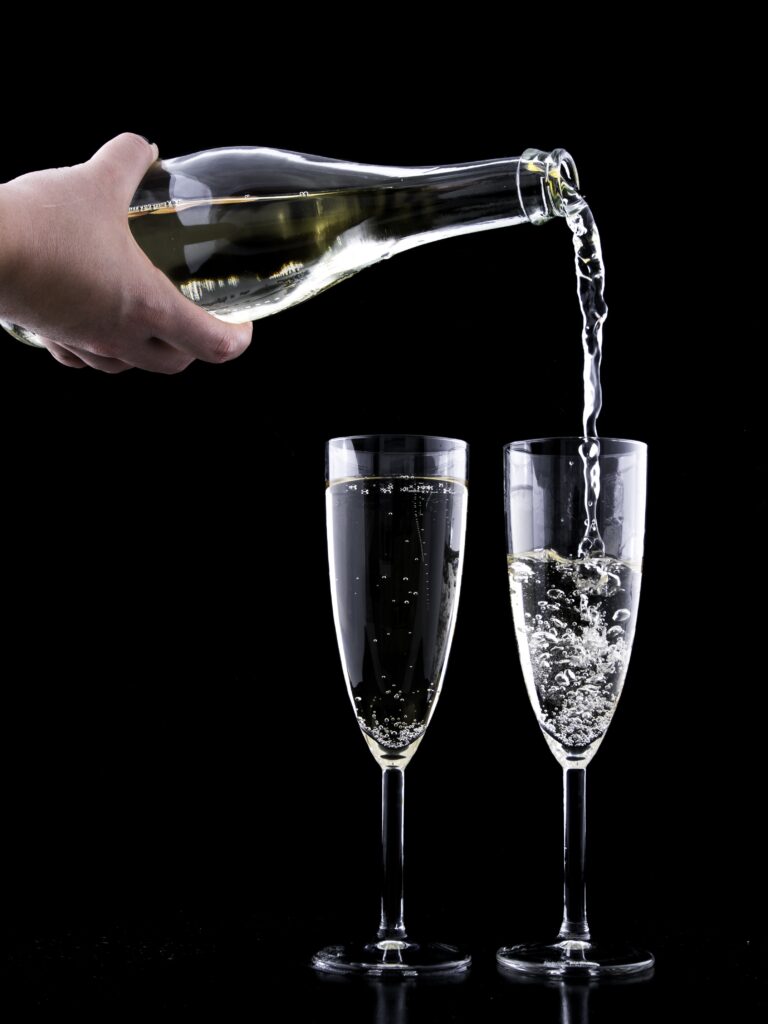Have you ever been shopping for Champagne and felt like a total fish out of water? Walked out of the sparkling wine aisle with your head reeling, and no real idea what you’re looking for? We’ve been there too. Sparkling wine/bubbly is a pretty big category with lots of options. Sparkling wine is exciting because it goes through two fermentations to achieve the classic bubbles associated with the style. While our list isn’t all-encompassing, here are some of the more popular options you might run into:
- This is the big one. It’s certainly the most well-known of the style, although there are lots of options out there. Champagne must be from the Champagne region of France for it to be considered Champagne. It’s a pretty exclusive club. It’s not always a sweet wine, but typically has a fruity taste, and its classic bubbly, effervescence.
- Cava is a sparkling wine that comes from Spain. Made in the classic method, where the second fermentation occurs in the bottle and the bubbles produced are smaller, Cava is made with the Macabeo, Parellada, or Xarel-lo grapes, which creates a more lemony flavor, or fruity pear undertones, respectively. Cava is typically on the drier scale of sparkling wines.
- Prosecco hails from Italy, and is named after the town it originated from, Prosecco. While Prosecco is most notably bubbly, it can come in other forms, and is created using Glera grapes. Its typically a much sweeter wine than Cava, and rather than the classic method, it is made with the tank method, where the second fermentation happens in a tank, producing much larger bubbles.
- Rosé. A recently more popular variety, rosé can also be made without the bubbles, or ‘still.’ It is known for its pinkish coloring, and its typically light and fruity aroma. While it is produced with success across Europe, it most notably comes from Provence, France.
Some additional things to keep in mind when looking for the right bubbly for you is its dryness level. Demi-sec is the sweetest, measuring 32 to 50 grams of sugar per liter of residual sugar, or 32-50 g/l. This is considered a sweet wine and typically pairs best with chocolate and strawberries, or rich desserts like cheesecake.
Extra-dry rates 12-17 g/l, and is noticeably less sweet than demi-sec, although it does still include a hint of sweetness. The sweetness it has is a left-over from the fermentation process. An extra-dry sparkling wine pairs best with lighter flavors from cheese and asparagus.
Brut is next and sits at 0-12 g/l and is the most popular of the varieties. Certainly, drier than extra-dry, it has just a light kiss of sweetness and Champagne most frequently comes in this dryness level. Some things to pair with this variety are the rich flavors of scallops, certain rich cheeses, and a nice flavorful risotto.
Extra Brut is the last of the list and features 0-6 g/l. During the process of fermentation, most or all of the yeast is eaten, leaving behind little residual sugar. Saltier foods like oysters and french fries pair best with an Extra Brut variety.
Looking to buy? Here are some imported sparkling wine options. Be sure to fill out our online pickup form with the bottles you want to try for easy and convenient pickup at Payless Liquors.













